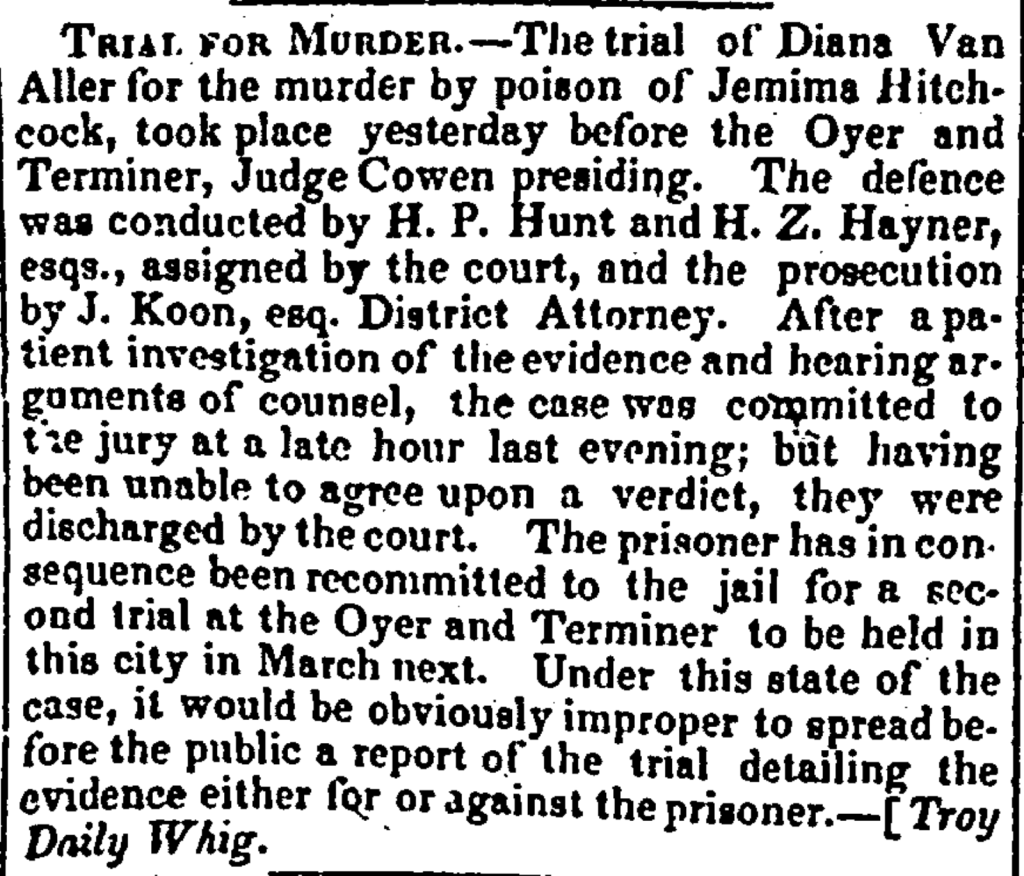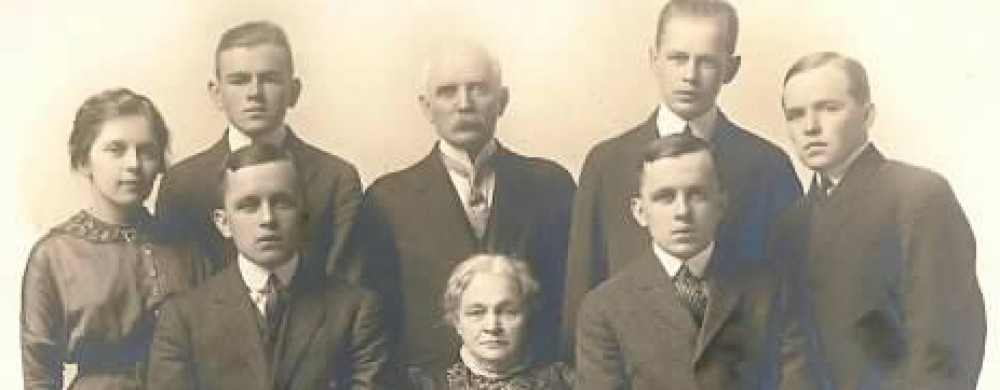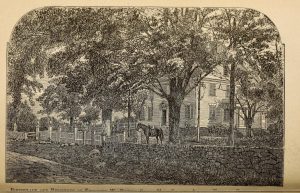To you gentle readers long awaiting Part Two, I apologize. My intention was to get to the bottom of all the odd facts attached to the life of Thomas Seth Benson, and deliver conclusions tied up with a pastel ribbon (appropriate for springtime). Alas, the scope of this follow on piece got out of hand. In order to move on, I acknowledge many mysteries remain, and present what I’ve discovered below.
Thomas Seth Benson was born about 1830 in Palermo, Maine to Isaac B. and Eliza F. (Pelton) Benson.[1, 19] He had an older brother and sister, Augustus and Almira, and younger siblings Octavia and William.[2] His mother, Eliza Pelton Benson, died in 1847,[3] when his youngest brother was seven years old.
By the 1850 US census, Thomas’s father, Isaac Benson, moved his now-motherless family from hard-scrabble farming in Maine, to the central Massachusetts town of West Boylston in Worcester County. All the workers in the household, including Isaac himself, were making boots. However, Thomas was missing from the household. He surfaced the next year, living in Methuen, MA, employed as a hatter, and gettting married.
Marriage #1 – Margaret J. Clement | 1851 – Newburyport, Massachusetts
On 14 October 1851, Thomas S. Benson married Margaret J. Clement in Newburyport, MA.[4] Margaret was born in Hampton, NH and lived there with her parents for the 1850 census.[5] Hampton, NH is where she gave birth in 1852 to daughter, Eliza Benson,[6] then in 1854 to a son, Charles Benson.[7]
Soon after that, the relationship broke down (there may or may not have been an official divorce), because on 30 October 1857, Margaret (Clement) Benson married Ransom Fogg in Hampton, NH.[8]
Marriage #2 – Ruth A. Taylor | About 1858 – Maine [?]
Barely three years after his first wife Margaret became Mrs. Fogg, Thomas Benson was enumerated in the 1860 US federal census in Kingfield, Franklin County, Maine. At 30 years of age, he had acquired real estate valued at $200 and $150 in personal property. His household consisted of 23-year-old Ruth A. (Taylor), his one-year-old daughter, Ida May Benson, and his 65-year-old father, Isaac B. Benson.[9]
Ruth was born in Farmington, ME, in 1836, to William and Amy (Oakes) Taylor. After a second daughter, Cora Benson, was born in 1861,[10] the family quit Maine for Boston, MA.
This was a key point in Thomas’s life, where he transformed himself from farmer to physician. If he got any medical training, it likely occurred in Boston, in the few months before he enlisted with the Union Army on 26 September 1862. From Doctors in Blue, George Washington Adams (1952) explains the state of medical education:
“In 1860, one year before the start of the Civil War, there were forty (40) existing medical schools… with total enrollment of 5,000… The demand for doctors outstripped the number of schools, and characteristically, students rushed through their classes in a year or less and then were free to hang out their shingle without (as was still commonplace in Europe) serving a professional apprenticeship.”
Ruth Benson lived in Boston the rest of her life. In the 1870 US census, she called herself a war widow. She raised her two daughters on her own, and when she died of cancer in 1878, she was identified as “widow of Thomas S. Benson.”[11] It is likely she never knew Thomas married three other women and fathered more children during her lifetime.
Marriage #3 – Clara Whitney | 1864 – Worcester, MA
Thomas was mustered out of the Massachusetts 3rd Cavalry Regiment, Company H, in Baton Rouge, Louisiana, 24 August 1863, after eleven months of a three-year hitch. Having enlisted as a physician with the rank of corporal (non-commissioned officer), he was discharged as a private, the lowest enlisted rank.[12] Something went wrong career-wise, but I don’t know what that was. Something went wrong health-wise, too. This was when Thomas began to have serious problems with his eyesight.[13, 19] He contracted “Purulent Ophthalmia”[20] in May 1863 in performance of his duty, and, from this point, his eye trouble made him incapable of returning to active service.[19]
Getting out of the war, and out of the military, must have improved his spirits, but not enough for him to return to Ruth and his daughters in Boston. He saw well enough the charms of Clara Whitney; Thomas married her on 2 November 1864 in Worcester, MA. On this record, Thomas identified himself as a physician and claimed the union was his second marriage.[14]
Thomas and Clara seem to have had no children. No other document of their life together has come to light. Interestingly, I was able to follow the fate of the four other wives, only Clara (Whitney) Benson seems to have vanished.
Clara, the daughter of Luther and Melinda (Wetherbee) Whitney was about two years older than Thomas. She had rejected her rural roots in Harvard, MA by the time she met Thomas, as she was residing in Boston when they married. She might be the 42-year-old Clara Benson, who was a dressmaker in Collins, Erie County, New York for the 1870 US census, but that’s where I ran out of clues for Clara.
Marriage #4 – Judith Spragg – 1868 – Springfield, New Brunswick (Canada)
Thomas’s trail led him northward to New Brunswick, Canada, the land of his father’s birth. Since I began Thomas Benson’s story here, with the 1871 Canada census, I’ll refer you back to Part 1 & Quack! Quack!! Quack!!! for related particulars.
I’m happy to report that Judith Spragg (b.1849), nearly twenty years younger than her groom, weathered her short alliance with Thomas Benson and came out okay. She bore him a son, LeForest Benson (1871-1940)[15] and, about five years later, married a William Urquhhart (almost certainly related to the quirky 1871 census enumerator). Judith and William had a daughter together, and lived out their autumn years in Newton, Massachusetts, where Judith (Spragg) (Benson) Urquhart passed away in March 1930.[16]
Marriage #5 – Anna Elizabeth (Gale) Howard – 1873 – Cedar Rapids, Iowa
What was our Maine native, Thomas Benson, the blind doctor, war vet, and recent resident of Canada doing out in Iowa? Darned if I know. I have a better idea of why his fifth wife-to-be, Anna (Gale) Howard (1843-1915) was so far from home.
Ann, also born in Maine, accompanied her birth family on their move out west in early 1869. Anna had daughter, Minnie, and was pregnant with Charlotte Victoria, born in Iowa in 1869. She and her husband, George Albert Howard were not living together in 1870 when Anna was working as a domestic.[17]
How she and Thomas got together is a mystery, but they were married on 27 May 1873.[18] Interestingly, Daisy A. Benson, the couple’s first child, seems to have been born in 1872.[21] They went on to have four sons, Lewis Bernard, Thomas Ray, Solon F. and William Augustus Benson.
By 1880, the family had moved from Iowa to Illinois (for 1876 birth of Solon) to Detroit, Michigan. The population census snapshot tells us Thomas is blind and has no occupation. Thirty-four-year-old Ann is caring for a 50-year-old blind man and five children ages twelve to four.[22] The 1880 Schedules of Defective, Dependent, and Delinquent Classes tells us more:
Thomas S. Benson – Pension, Self supporting
Form of Blindness = Total – at 33 years of age
Supposed cause of blindness if known = General Exposure. In Army and producing inflammation of the Eyes resulting in Total blindness in Six Weeks
Has this person ever been an inmate in an institution for the blind? = Boston Infirmary – 3 Wks – 1863
The youngest son, William A. Benson, seems to have been born outside Maine in 1882, presumably, it was after that the Benson family came back east to settle in Buckfield, Oxford County, Maine. Thomas S. Benson died there, on 10 March 1888, of “Consumption” (tuberculosis). He also died insolvent,[23] as per the following:
Oxford Democrat—-Buckfield August 28, 1888
Thomas S. Benson – insolvent – call to creditors to submit claims by Nov. 3, 1888
Fred H. Atwood, Edwin F. Atwood, Commissioners
That may have been a little embarrassing for the widow and children, but Ann didn’t let it slow her down. Three months after burying Thomas, Anna E. (Gale) (Howard) Benson married Charles H. Hodgdon, a Buckfield native, 12 years her junior. [24]
Though Thomas was dead two years, his name appears on the 1890 Special Schedules of the Eleventh Census Enumerating Union Veterans and Widows of Union Veterans of the Civil War:
Line 39. Anna E. widow of / Family – Thomas S. Benson – Rank: Private – Regiment: 22 Mass —
—2nd half page—
Line 39. PO Address: South Paris Maine | Disability Incurred: Consumption / Blindness | Remarks: Died Mar 10, 1888 Totally Blind
Anna was apparently receiving compensation for the minor Benson children. Now, Mrs. Charles Hodgdon, Ann died in Buckfield on 2 July 1915. I hope she had some good times with Charlie in those later years.
And in the end…
We should not judge others, but it’s hard to refrain. Not only did Thomas Benson leave several women, seemingly without ceremony and without support, he left children behind, too. I found ten of them. To say, and he never looked back, would be in poor taste (considering his blindness), but there it is. We can hope his progeny ended up having more joy in their lives than Thomas brought to them and their mothers.
References & Sources
[1] Ancestry.com: Massachusetts, Marriage Records, 1840-1915. Worcester, MA, 1864. Thomas S. Benson & Clara Whitney.
[2] Ancestry.com: 1850 United States Federal Census. West Boylston, Worcester, MA; Dwelling #178, Family #214.
[3] Familysearch.org: International Genealogical Index (IGI). Entry for Moses Pelton, batch A22798-6.
[4] Familysearch.org: Massachusetts Marriages, 1841-1915. Newburyport, Essex, MA, 1851. Thomas S. Benson & Margaret Clemens (Clement).
[5] Familysearch.org: United States Census, 1850. Hampton, Rockingham, NH; Family #125.
[6] Familysearch.org: Massachusetts Marriages, 1841-1915. Boston, Suffolk, MA, 1871, Frank E. Sampson and Eliza M. Benson.
[7] Familysearch.org: New Hampshire Death Records, 1654-1947. Charles Benson, 15 Aug 1861.
[8] Familysearch.org: New Hampshire Marriage Records, 1637-1947. Hampton, 1857. Ransom Fogg & Margaret Benson.
[9] Ancestry.com: United States Federal Census, 1860; Kingfield, Franklin, Maine; Roll: M653_435; Page: 820; Dwelling #81, Family #85.
[10] Ancestry.com: Massachusetts, Death Records, 1841-1915. Ruth Benson (Taylor) Ruth A Benson Taylor, 3 Aug 1878; Boston, MA.
[11] Ancestry.com: Massachusetts Deaths, 1841-1915. Cora B. McConville, 10 Sep 1888; Chelsea, Massachusetts, v 393 p 451, State Archives, Boston; FHL microfilm 960,239.
[12] Ancestry.com: U.S., Civil War Soldier Records and Profiles, 1861-1865. Thomas S Benson, Enlistment Date: 26 Sep 1862, Rank at enlistment: Corporal, State Served: Massachusetts, Service Record: Enlisted in Company H, Massachusetts 3rd Cavalry Regiment on 27 Oct 1862. Mustered out on 24 Aug 1863 at Baton Rouge, LA.
[13] Ancestry.com: National Archives and Records Administration (NARA); Washington, D.C.; U.S. Federal Census – 1880 Schedules of Defective, Dependent, and Delinquent Classes; Year: 1880; Roll: 73; Publication Number: T1164. Thomas S. Benson, Detroit, MI.
[14] Ancestry.com: Massachusetts, Marriage Records, 1840-1915. Thomas S. Benson and Clara Whitney, 2 Nov 1864, Worcester, Massachusetts.
[15] Ancestry.com: Massachusetts, State and Federal Naturalization Records, 1798-1950. Laforest Benson, Birth Date: 24 Apr 1871, Birth Place: St John, New Brunswick, Arrival Date: 27 Apr 1888, Arrival Place: Boston, Petition Date: 17 Oct 1896, Petition Place: Boston, Massachusetts, USA.
[16] Ancestry.com: U.S. City Directories, 1822-1995. Newton, Massachusetts, City Directory, 1931. Judith Urquhart Death Date: 21 Mar 1930, Spouse: William Urquhart.
[17] Ancestry.com: 1870 United States Federal Census. Cedar Rapids Ward 4, Linn, Iowa; Roll: M593_405; Page: 56B; Dwelling #940, Family #983, Wm. K. Gale.
[18] Familysearch.org: county courthouses, Iowa; FHL microfilm 1,705,349. Thomas S. Benson and Ann E. Gale, 27 May 1873, Cedar Rapids, Linn, IA.
[19] Fold3 by Ancestry: Thomas S Benson; Civil War Service File. Thomas S. Benson, Co. H, 3rd MassachusettsCavalry: Muster Records and Disability Discharge Certificate #7130; (12 pages). https://www.fold3.com/image/314760708.
[20] Wikipedia: Ophthalmia; https://en.wikipedia.org/wiki/Ophthalmia
[21] Find A Grave: http://www.findagrave.com/ Memorial No. 93338123. Daisy A Parkinson (18 Jun 1872 – 7 Mar 1929), Riverside Cemetery, Lewiston, Androscoggin County, Maine.
[22] Ancestry.com: 1880 United States Census. Roll: 612; Detroit, Wayne, Michigan; Enumeration District: 293. Page: 523C; Dwelling #26, Family #26.
[23] Ancestry.com: Maine, Wills and Probate Records, 1584-1999. Thomas S Benson, Probate Place: Oxford, Maine. Estate Files, Drawer B18, Bangs, Henry-Brown, Elizabeth S, 1888-1892 (Table of Contents, 20 images).
[24] Find A Grave: http://www.findagrave.com/ Memorial No. 30231437. Anna Eliza Gale Hodgdon (Jul. 3, 1842 – Jul. 2, 1915), Buckfield Village Cemetery, Buckfield,
Oxford County, Maine.







![H.A. Thomas & Wylie. (ca. 1896) Man Wearing Tuxedo, Holding Bowler Hat. , ca. 1896. [N.Y.: H.A. Thomas & Wylie Litho. Co] [Photograph] Retrieved from the Library of Congress](https://pooririshandpilgrims.com/wp-content/uploads/2018/07/1896-boweler-tuxedo.jpg?w=230)



